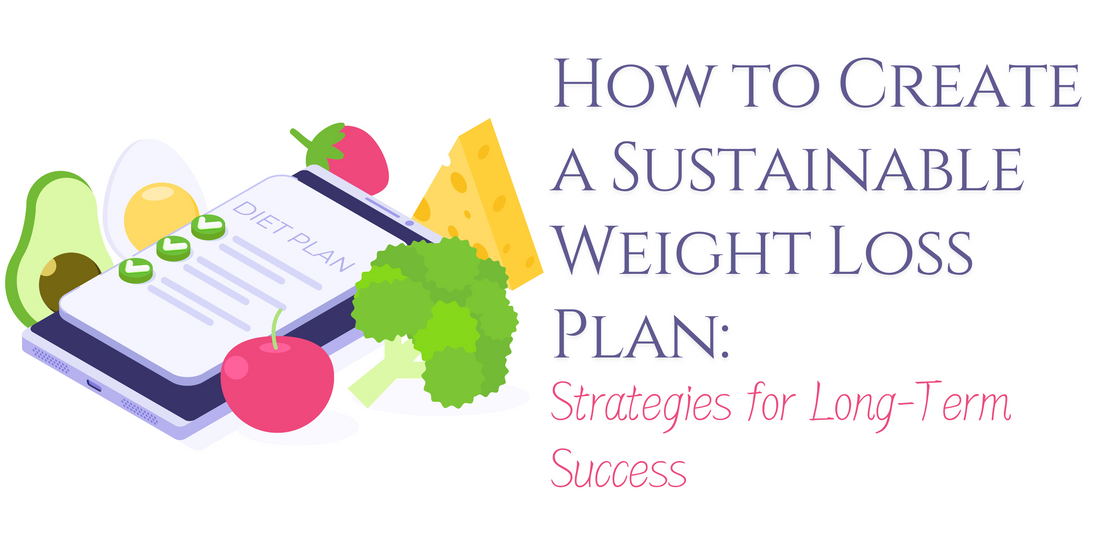
How to Create a Sustainable Weight Loss Plan: Strategies for Long-Term Success
Million's SmileShare
Introduction
Creating a weight loss plan that is not only effective but also sustainable is crucial for long-term success. While quick fixes and fad diets might offer immediate results, they often fail to produce lasting changes. A sustainable weight loss plan involves making gradual, realistic changes to your lifestyle that you can maintain over time. In this blog, we’ll outline key strategies for developing a weight loss plan that supports long-term health and well-being.
1. Set Realistic Goals
Define Your Objectives
Setting achievable and specific goals is the foundation of a successful weight loss plan. Instead of aiming for drastic changes, focus on setting realistic short-term and long-term goals.
-
Short-Term Goals: These can include losing a small amount of weight per week, incorporating more vegetables into your diet, or committing to a certain number of workouts per week.
-
Long-Term Goals: These might involve reaching a target weight, maintaining a healthy weight for a year, or adopting a balanced lifestyle.
-
Tip: Use the SMART criteria (Specific, Measurable, Achievable, Relevant, Time-bound) to set your goals and track your progress.
2. Develop a Balanced Diet
Focus on Nutrient-Dense Foods
A balanced diet is key to sustainable weight loss. Instead of following restrictive diets, aim to include a variety of nutrient-dense foods that support your overall health.
-
Incorporate Whole Foods: Prioritize fruits, vegetables, whole grains, lean proteins, and healthy fats. These foods provide essential nutrients and help you feel satisfied.
-
Control Portions: Pay attention to portion sizes to avoid overeating, even when eating healthy foods.
-
Tip: Plan your meals and snacks ahead of time to ensure you have nutritious options readily available and avoid impulsive eating.
3. Create a Consistent Exercise Routine
Find Activities You Enjoy
Exercise is a critical component of any weight loss plan, but it’s important to choose activities that you enjoy and can stick with long-term.
-
Incorporate Variety: Include a mix of cardiovascular exercises, strength training, and flexibility workouts to keep things interesting and engage different muscle groups.
-
Set a Schedule: Aim for at least 150 minutes of moderate-intensity aerobic activity or 75 minutes of vigorous-intensity activity per week, combined with strength training exercises.
-
Tip: Find a workout buddy or join a fitness class to stay motivated and make exercise more enjoyable.
4. Monitor Your Progress
Track Your Achievements
Regularly monitoring your progress helps you stay accountable and make adjustments to your plan as needed.
-
Keep a Journal: Track your food intake, exercise routines, and any changes in weight or measurements. This can help you identify patterns and areas for improvement.
-
Celebrate Milestones: Recognize and celebrate your achievements, whether it’s reaching a weight loss goal or sticking to your workout routine for a month.
-
Tip: Use apps or tools that make tracking easier and more convenient.
5. Address Emotional Eating
Understand Your Triggers
Emotional eating can sabotage your weight loss efforts. Identifying and addressing the triggers that lead to emotional eating is essential for long-term success.
-
Identify Triggers: Pay attention to situations, emotions, or stressors that prompt you to eat for reasons other than hunger.
-
Develop Coping Strategies: Find alternative ways to manage stress or emotions, such as practicing mindfulness, engaging in hobbies, or talking to a friend.
-
Tip: Consider seeking support from a therapist or counselor if emotional eating is a significant challenge for you.
6. Prioritize Sleep and Stress Management
Support Overall Well-Being
Adequate sleep and effective stress management are crucial for maintaining a healthy weight and overall well-being.
-
Get Enough Sleep: Aim for 7-9 hours of quality sleep per night. Poor sleep can disrupt hunger hormones and increase cravings for unhealthy foods.
-
Manage Stress: Incorporate stress-relief techniques such as meditation, deep breathing exercises, or yoga to support emotional and physical health.
-
Tip: Create a relaxing bedtime routine and practice stress-reducing activities regularly to promote better sleep and manage stress effectively.
7. Make Gradual Changes
Focus on Long-Term Habits
Sustainable weight loss is about making gradual, lasting changes rather than quick fixes. Aim to incorporate small, manageable changes into your daily routine.
-
Start Small: Begin with one or two changes at a time, such as adding more vegetables to your meals or increasing your daily step count.
-
Build on Success: As you adapt to these changes, gradually introduce additional healthy habits.
-
Tip: Be patient and allow yourself time to adjust to new routines. Consistency is key to achieving long-term success.
8. Seek Support and Stay Accountable
Find a Support System
Having a support system can make a significant difference in your weight loss journey. Seek out friends, family, or support groups that can provide encouragement and accountability.
-
Join a Group: Consider joining a weight loss group or online community where you can share experiences, get advice, and receive support.
-
Work with Professionals: If needed, consult with a registered dietitian, nutritionist, or personal trainer to receive personalized guidance and support.
-
Tip: Surround yourself with positive influences and individuals who support your goals.
Conclusion
Creating a sustainable weight loss plan involves setting realistic goals, adopting a balanced diet, incorporating regular exercise, and addressing emotional and lifestyle factors. By focusing on gradual, long-term changes and seeking support, you can achieve lasting weight loss success and improve your overall well-being. Remember, the key to sustainable weight loss is consistency and making choices that you can maintain over time.
